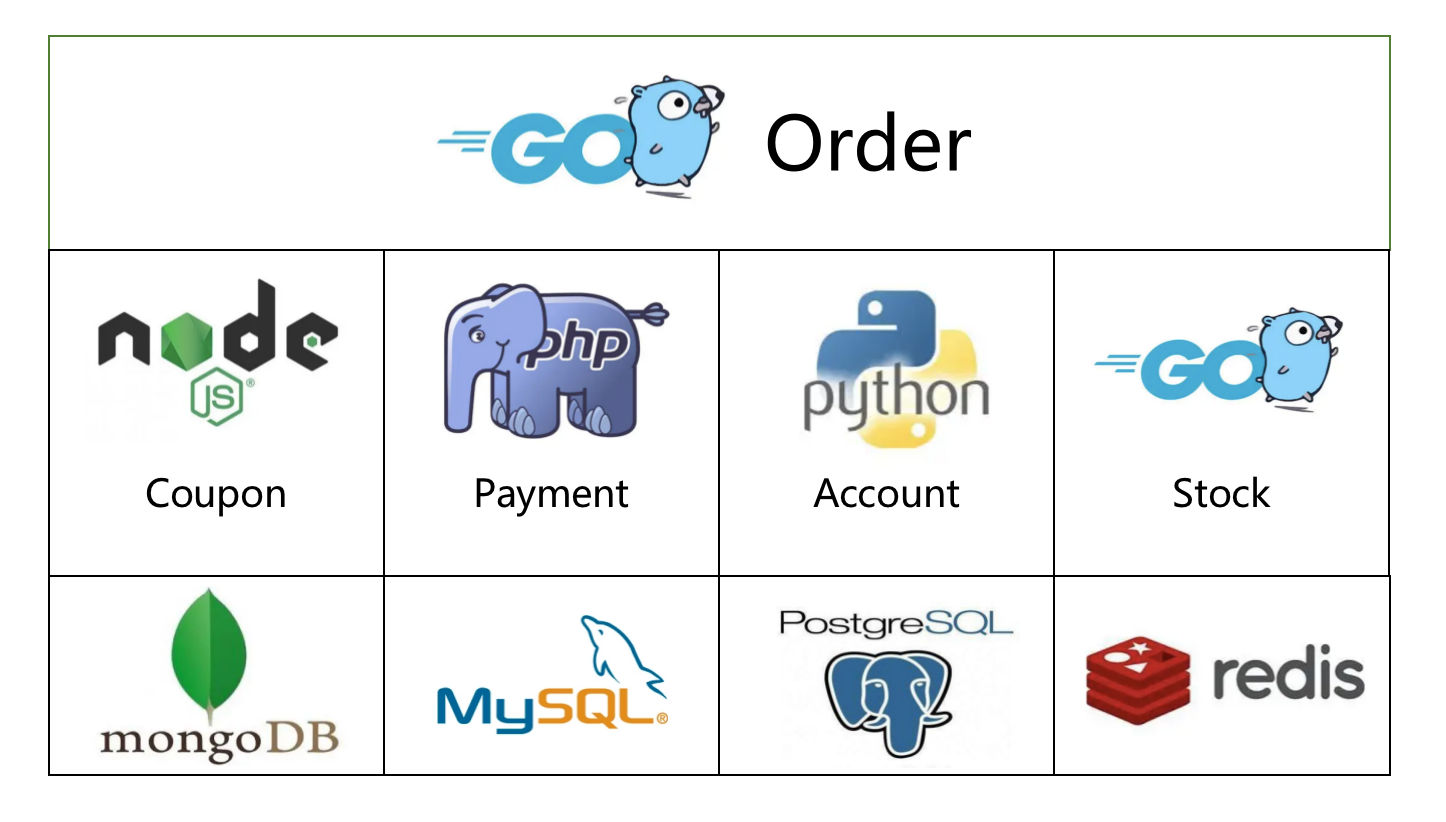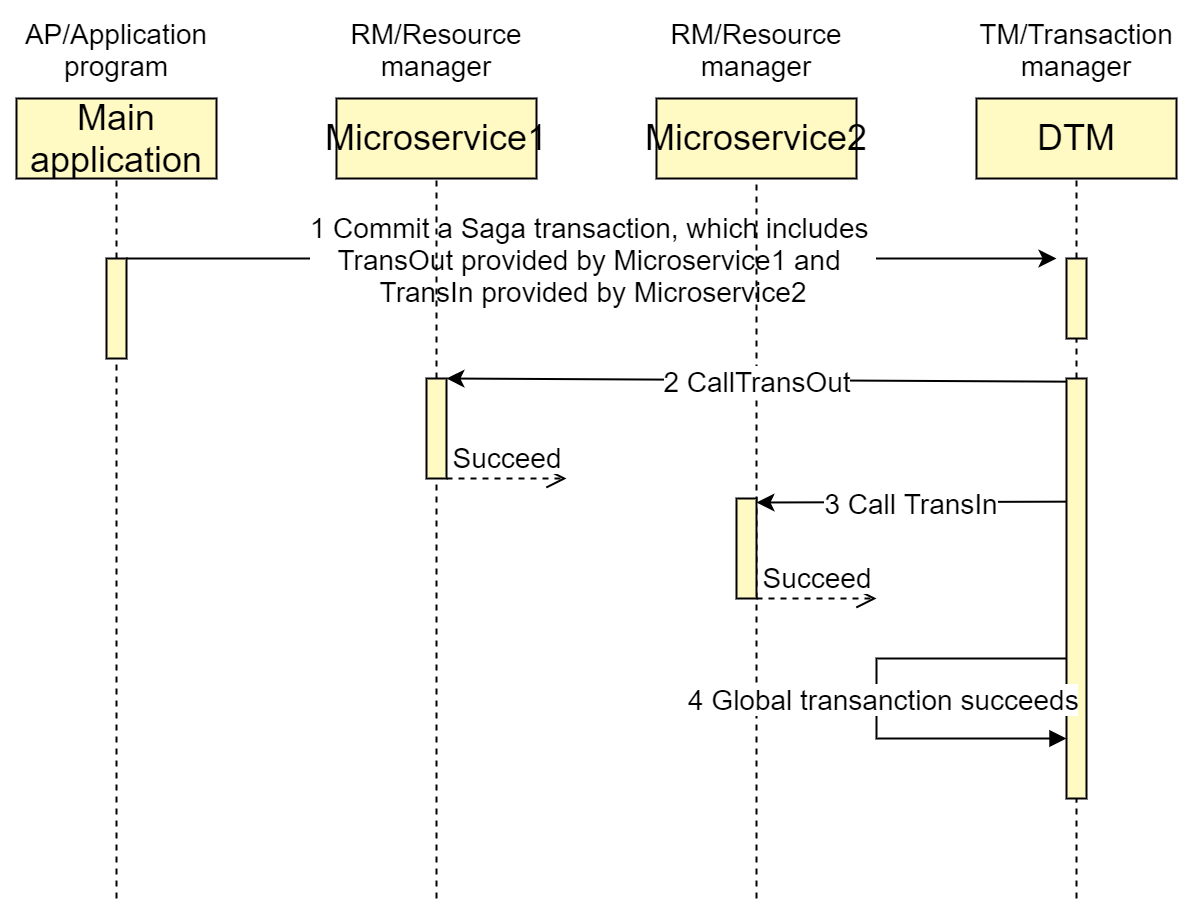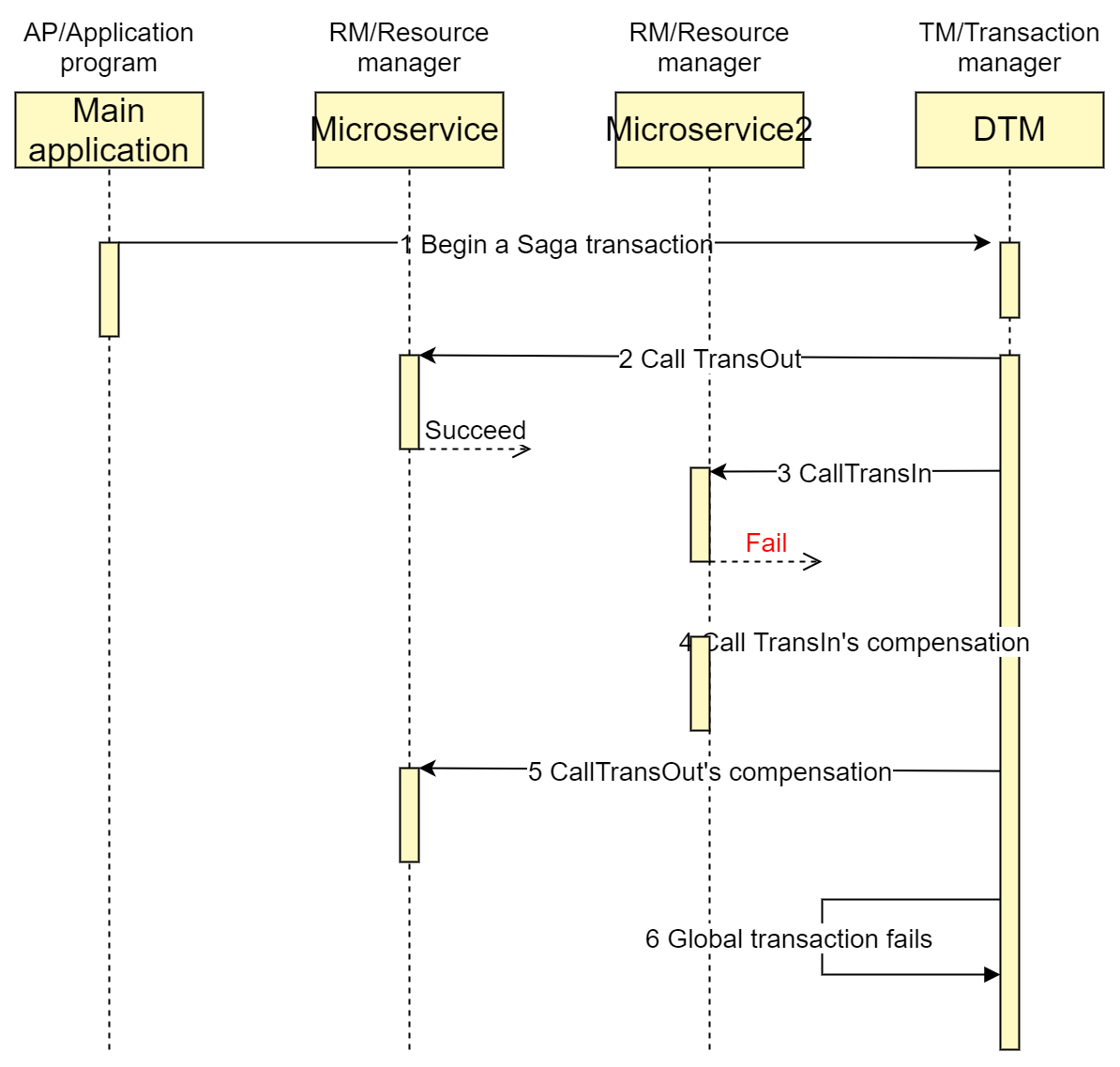大家好,dtm最终跟原公司谈下来了知识产权转让,现已恢复维护,请大家访问dtm。中间给大家带来的不便,敬请谅解!
English | 简体中文
Distributed Transactions Manager
What is DTM
DTM is a distributed transaction framework which provides cross-service eventual data consistency. It provides saga, tcc, xa, 2-phase message strategies for a variety of application scenarios. It also supports multiple languages and multiple store engine to form up a transaction as following:
Who's using DTM (partial)
Features
-
Language-agnostic
- Suit for companies with multiple-language stacks. Easy to write bindings for Go, Python, PHP, Node.js, Ruby, and other languages.
-
Support for multiple distributed transaction solutions
- TCC, SAGA, XA, 2-phases message.
-
Extremely easy to adapt
- Support HTTP and gRPC, provide easy-to-use programming interfaces, lower substantially the barrier of getting started with distributed transactions. Newcomers can adapt quickly.
-
Easy to use
- Relieving developers from worrying about suspension, null compensation, idempotent transaction, and other tricky problems, the framework layer handles them all.
-
Easy to deploy, easy to extend
- DTM depends only on MySQL/Redis, easy to deploy, cluster, and scale horizontally.
Cook Book
Quick start
run dtm
git clone https://github.com/dtm-labs/dtm && cd dtm
go run main.goStart an example
Suppose we want to perform an inter-bank transfer. The operations of transfer out (TransOut) and transfer in (TransIn) are coded in separate micro-services.
Here is an example to illustrate a solution of dtm to this problem:
git clone https://github.com/dtm-labs/dtmcli-go-sample && cd dtmcli-go-sample
go run main.goCode
Use
// business micro-service address
const qsBusi = "http://localhost:8081/api/busi_saga"
// The address where DtmServer serves DTM, which is a url
DtmServer := "http://localhost:36789/api/dtmsvr"
req := &gin.H{"amount": 30} // micro-service payload
// DtmServer is the address of DTM micro-service
saga := dtmcli.NewSaga(DtmServer, dtmcli.MustGenGid(DtmServer)).
// add a TransOut subtraction,forward operation with url: qsBusi+"/TransOut", reverse compensation operation with url: qsBusi+"/TransOutCom"
Add(qsBusi+"/TransOut", qsBusi+"/TransOutCom", req).
// add a TransIn subtraction, forward operation with url: qsBusi+"/TransIn", reverse compensation operation with url: qsBusi+"/TransInCom"
Add(qsBusi+"/TransIn", qsBusi+"/TransInCom", req)
// submit the created saga transaction,dtm ensures all subtractions either complete or get revoked
err := saga.Submit()When the above code runs, we can see in the console that services TransOut, TransIn has been called.
Timing diagram
A timing diagram for a successfully completed SAGA transaction would be as follows:
Rollback upon failure
If any forward operation fails, DTM invokes the corresponding compensating operation of each sub-transaction to roll back, after which the transaction is successfully rolled back.
Let's purposely fail the forward operation of the second sub-transaction and watch what happens
app.POST(qsBusiAPI+"/TransIn", func(c *gin.Context) {
log.Printf("TransIn")
// c.JSON(200, "")
c.JSON(409, "") // Status 409 for Failure. Won't be retried
})The timing diagram for the intended failure is as follows:
More examples
Refer to dtm-examples.
Slack
You can join the DTM slack channel here.
Give a star! ⭐
If you think this project is good, or helpful to you, please give a star!



